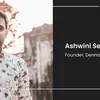These brothers are creating a buzz in the menswear market with their high-street fashion brand
Amar and Raghavendra Pawar started Powerlook in 2011 to give India a fashionable brand that is affordable and quality-driven. SMBStory speaks to the brothers to understand how they cracked the code and made a name in the market.
When brothers Amar and Raghavendra Pawar were in college around 2008, they were looking to purchase t-shirts that cost Rs 300 or less for their daily use. But none of the brands in the market were able to assist. They were either priced too high or the ones available in their budget were not so quality-driven.
Since the brothers had an entrepreneurial bent of mind, they decided to investigate a business opportunity in the t-shirt trading space.
“We wanted to provide high-quality products at a reasonable price,” Raghav says. As a result, the brothers opened a shop in Borivali West, Mumbai, and began selling t-shirts there. Around 2011, they started buying t-shirts from wholesalers and sold them at their store.
As the sales and popularity of the store grew, Raghav and Amar faced the challenge of garnering the volume of clothes.
However, the breakthrough for the company came in 2013 when they decided to start contract manufacturing and come up with the brand name, .
According to the founders, apart from being affordable, Powerlook aims to give India a brand that is high-street, fashionable, and has nuances of the west.
Today, Powerlook has built a sizable presence in the Indian menswear market. With a whopping 288k followers on Instagram and five stores in Mumbai, Amar and Raghav share plans to touch Rs 40 crore revenue in FY23.
Cracking the code
Raghav and Amar’s original aim to sell low-cost products at a decent quality took some time to materialise. However, a step-by-step approach helped them accomplish it.
First, they decided to eliminate the middlemen. “Between us and the manufacturer, there is a wholesaler, a distributor, and a few other middlemen, all of whom have their margins,” says Amar.
The brothers highlight that a t-shirt that typically costs Rs 200 would cost them around Rs 300-Rs 350.
When they started reaching out to manufacturers directly, they would get the clothes at a much lower price. “This helped us pass on the cost-benefit to our consumers.”
As the volumes began to increase after 2014, Raghav and Amar started reaching out directly to mills to source the fabric, and they tied up with manufacturing units in Delhi, Mumbai, Ludhiana, and other places to manufacture shirts, t-shirts, shorts, jeans, jackets, etc. Today, their SKUs have expanded across different categories prices between Rs 400-Rs 1,600.
Another strategy that worked for the company was planning and working in advance. The brothers point out that they would design some clothes in Mumbai and develop their samples in small batches. This helped them perfect the product in a location that is closer to the headquarters and saved time.
Once the product was ready, it was sent to another unit to be manufactured on a larger scale.
All these strategies helped them earn the trust of the consumer, and word-of-mouth marketing helped the brand scale up. By 2019, they had opened five outlets across Mumbai, including Andheri West, Borivali West, and Thane.

Building an online presence and surviving the pandemic
Powerlook has built a sizable presence on Instagram, with about 288k followers. Raghav adds that building a presence on Instagram and Facebook and using Facebook ads and Google Adwords was responsible for bringing traffic to their website. Amar and Raghav also emphasise how taking the brand online played a big role in expanding their presence across the country.
When the brand was busy scaling up with an offline presence, Amar says they would get a lot of queries on Instagram from customers hailing from other cities. Since they too wanted the shirts but lacked the means since their presence was limited to Mumbai, Amar’s wife, Heena Pawar, launched the company’s D2C website in 2018.
This helped them penetrate the northern, southern, and eastern regions. As the online business started booming and the brand launched its fifth store in Thane, the COVID-19 pandemic struck in 2020, bringing the offline business to a grinding halt.
What saved them was their D2C channel. At the start of the pandemic, 70 percent of their sales came from online, which increased to 100 percent during the pandemic due to nationwide lockdowns.
Today, as the offline space is on its road to recovery, the revenue contributed by both online and offline are 50-50. Seeing the digital boom, the brothers have decided to list their products on Bewakoof.com. They are also in talks to get listed on Myntra.
The road ahead
According to a report by research platform Statista, the Indian menswear market is slated to reach Rs 330,000 crores by 2028.
Several brands have carved a niche for themselves in the menswear space. From Raymond, Woodland, and Manyavar to FabIndia and Huechem Textiles, the list is endless. Raghav and Amar highlight that they want to be known as a youth-centric brand. That’s their larger goal. "We want to cater to customers who are aged between 16 and 32."
Raghav says they also want to explore the franchisee model to scale up the offline business in the coming months and tie-up with multi-brand outlets such as Pantaloons and Shoppers Stop.
Raghav sums up by saying that they are single-mindedly focused on doubling their turnover in FY23 to at least Rs 40 crore, and are focusing on geographical expansion.
Edited by Megha Reddy









